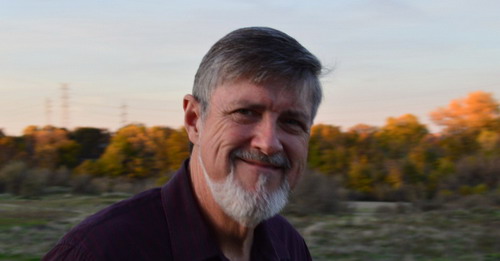|
April 7, 2024
Hi ,
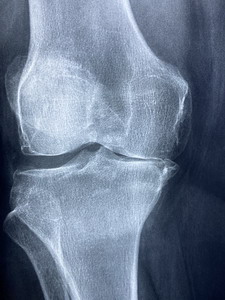 Can we rebuild the cartilage in our joints once it has started to degenerate away? Most of my readers are over 45. so this is an important question for them. In truth, our joints start wearing down from age 25 on, but usually, we don't feel it for 20+ years at least, unless we injure the joints from sports or
accidents. But once those joint surfaces do start to wear, we feel it initially as stiffness and occasional discomfort. As the years progress, that discomfort becomes more noticeable, more frequent, and more intense. This process of wear and tear in the joints is called osteoarthritis. There does not need to be any injury to the joint. Just gravity and the passage of time is enough to wear down the cartilage in the joint until you end up with bone on bone grinding away creating inflammation and
pain. Most typically this occurs in the major weight-bearing joints; the hips and the knees. Can we rebuild the cartilage in our joints once it has started to degenerate away? Most of my readers are over 45. so this is an important question for them. In truth, our joints start wearing down from age 25 on, but usually, we don't feel it for 20+ years at least, unless we injure the joints from sports or
accidents. But once those joint surfaces do start to wear, we feel it initially as stiffness and occasional discomfort. As the years progress, that discomfort becomes more noticeable, more frequent, and more intense. This process of wear and tear in the joints is called osteoarthritis. There does not need to be any injury to the joint. Just gravity and the passage of time is enough to wear down the cartilage in the joint until you end up with bone on bone grinding away creating inflammation and
pain. Most typically this occurs in the major weight-bearing joints; the hips and the knees.
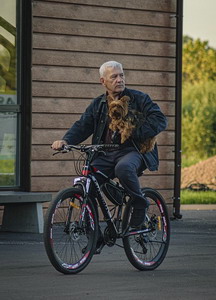 What stimulated this article was a video I saw of an older English fellow who had severe osteoarthritis in his hips. X-rays showed that he was bone on bone and told he needed hip replacement surgery. It did not make sense to him that his hips could not heal themselves like the rest of the body does. Standard medical
practice insists that cartilage cannot heal itself as cartilage has no blood supply. No blood supply means there is no way for the joint to get the nutrients it needs to repair itself. He chose to ignore the doctors and proceeded to change his diet to remove every food that promoted inflammation in his body. He went on a carnivore diet which included intermittent fasting. He took supplements that supported joint formation, and he bicycled every day for exercise. Over the course of nine months,
all his joint pain slowly went away and he was a happy camper. He did not know if his cartilage actually got better, but his pain was gone. Then about a year into his journey he was struck by a car while on his bicycle. He got banged up a bit, but the interesting thing was that as a result of the accident the doctors took x-rays of his hips looking for damage and discovered that his hip joint cartilage was back to normal and looking like he was 20 years younger. What stimulated this article was a video I saw of an older English fellow who had severe osteoarthritis in his hips. X-rays showed that he was bone on bone and told he needed hip replacement surgery. It did not make sense to him that his hips could not heal themselves like the rest of the body does. Standard medical
practice insists that cartilage cannot heal itself as cartilage has no blood supply. No blood supply means there is no way for the joint to get the nutrients it needs to repair itself. He chose to ignore the doctors and proceeded to change his diet to remove every food that promoted inflammation in his body. He went on a carnivore diet which included intermittent fasting. He took supplements that supported joint formation, and he bicycled every day for exercise. Over the course of nine months,
all his joint pain slowly went away and he was a happy camper. He did not know if his cartilage actually got better, but his pain was gone. Then about a year into his journey he was struck by a car while on his bicycle. He got banged up a bit, but the interesting thing was that as a result of the accident the doctors took x-rays of his hips looking for damage and discovered that his hip joint cartilage was back to normal and looking like he was 20 years younger.
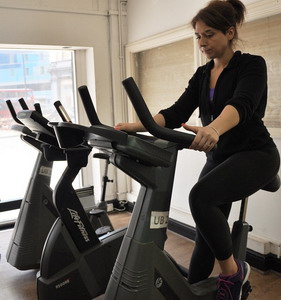 Okay, that is a single case and not something that can be generalized to larger populations. Then I found a video by Prof. Bellemans. He is the director of the Belgian Olympic team, and a professor of Orthopedics specializing in the knee. He was saying that of course you can regrow/strengthen the cartilage in the
knee, hip, or ankle. The trick is knowing how to do this. It has taken many years of study to figure out how to do this, but the formula is fairly simple. To quote Prof. Bellemans: Cartilage is strengthened by short bouts (10 to 15 minutes) of cyclic non-impact or soft impact exercise, of moderate intensity and resistance, and with sufficiently long intervening rest periods between sessions. Watch here. Okay, that is a single case and not something that can be generalized to larger populations. Then I found a video by Prof. Bellemans. He is the director of the Belgian Olympic team, and a professor of Orthopedics specializing in the knee. He was saying that of course you can regrow/strengthen the cartilage in the
knee, hip, or ankle. The trick is knowing how to do this. It has taken many years of study to figure out how to do this, but the formula is fairly simple. To quote Prof. Bellemans: Cartilage is strengthened by short bouts (10 to 15 minutes) of cyclic non-impact or soft impact exercise, of moderate intensity and resistance, and with sufficiently long intervening rest periods between sessions. Watch here.
 He emphasizes that the cartilage cells, called chondrocytes, shut down their response to stimulation of this sort after 10 to 15 minutes and need 8 to 12 hours of rest before exercising them again. He also emphasizes how slowly these cells grow, so you must approach this protocol with a lot of patience. Expect repair
to take 6 to 12 months, much like the English gentleman experienced. Start with cycling, elliptical, or rowing machines for a long time then move up to fast walking for another long time before you try anything jarring like running. He emphasizes that the cartilage cells, called chondrocytes, shut down their response to stimulation of this sort after 10 to 15 minutes and need 8 to 12 hours of rest before exercising them again. He also emphasizes how slowly these cells grow, so you must approach this protocol with a lot of patience. Expect repair
to take 6 to 12 months, much like the English gentleman experienced. Start with cycling, elliptical, or rowing machines for a long time then move up to fast walking for another long time before you try anything jarring like running.
 I reviewed many American medical articles on this subject, and there is a lot of hope in the realm of regenerative medicine for reversing cartilage loss, but they say they are not there yet. They are using techniques like stabbing the worn cartilage to stimulate scar tissue in the area to thicken up the cartilage, but
this only seems to help for around 6 months. The fibro-cartilage this forms is just not very strong. Other docs are injecting blood platelets with serum into joints because of the chemical growth factors it contains, but again this only seems to last about 6 months. Stem cells are also being used but with the same results. Implanting little pads of fibrous stuff that generates little electrical currents through piezo-electric action is the latest research and it seems to be getting good results
with rats. I reviewed many American medical articles on this subject, and there is a lot of hope in the realm of regenerative medicine for reversing cartilage loss, but they say they are not there yet. They are using techniques like stabbing the worn cartilage to stimulate scar tissue in the area to thicken up the cartilage, but
this only seems to help for around 6 months. The fibro-cartilage this forms is just not very strong. Other docs are injecting blood platelets with serum into joints because of the chemical growth factors it contains, but again this only seems to last about 6 months. Stem cells are also being used but with the same results. Implanting little pads of fibrous stuff that generates little electrical currents through piezo-electric action is the latest research and it seems to be getting good results
with rats.
 Red light therapy is another approach I found that has had a lot of positive findings with knees. Hips are too deep for red light therapy to reach. Also, I found a lot of good reports of something called shock wave therapy. This is an in-office therapy only, not something you can do at home. Red light and shock waves both
have a good track record of relieving joint pain, but no real research has demonstrated that it will actually regrow cartilage tissue. But still, if your pain is gone, isn't that your main concern? There is even research on implanting little braces into the joints that hold the joint apart for many months while the joint heals without full pressure on the tender tissue. This research says to me that under the right conditions, the joint cartilage can and does heal. Red light therapy is another approach I found that has had a lot of positive findings with knees. Hips are too deep for red light therapy to reach. Also, I found a lot of good reports of something called shock wave therapy. This is an in-office therapy only, not something you can do at home. Red light and shock waves both
have a good track record of relieving joint pain, but no real research has demonstrated that it will actually regrow cartilage tissue. But still, if your pain is gone, isn't that your main concern? There is even research on implanting little braces into the joints that hold the joint apart for many months while the joint heals without full pressure on the tender tissue. This research says to me that under the right conditions, the joint cartilage can and does heal.
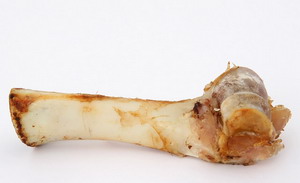 I have been telling patients for years that because the joints have no blood supply, the joint depends on motion to form a suction in the joint space to suck in the nutrition it needs from the surrounding tissues. This makes one wonder what nutrients the chondrocytes that make up your cartilage want. What can we
supplement our diet with to help those joints heal? Strangely enough, they want the same stuff that is in the joints of other animals. The most direct support for our joints is to eat joint tissue from animals. In our modern sanitized world that looks like collagen (10-15 grams/day), MSM, chondroitin sulfate, omega 3 oils, glucosamine (1.5 grams/day), UC2 (undenatured type 2 collagen 40 mg/day), and for joint inflammation, Boswellia herb and Bromelain (1gm/day). This last one is a
proteolytic enzyme that helps to clean out fibrin gunk trapped in the joint space contributing to inflammation and stiffness. Personally, I use a much stronger enzyme for this purpose called Lumbrokinase made from earthworms. Streptokinase and Nattokinase are also popular enzymes for mobilizing joints. Another herb I use personally is White Willow Bark extract, which reduces inflammation nicely. I have been telling patients for years that because the joints have no blood supply, the joint depends on motion to form a suction in the joint space to suck in the nutrition it needs from the surrounding tissues. This makes one wonder what nutrients the chondrocytes that make up your cartilage want. What can we
supplement our diet with to help those joints heal? Strangely enough, they want the same stuff that is in the joints of other animals. The most direct support for our joints is to eat joint tissue from animals. In our modern sanitized world that looks like collagen (10-15 grams/day), MSM, chondroitin sulfate, omega 3 oils, glucosamine (1.5 grams/day), UC2 (undenatured type 2 collagen 40 mg/day), and for joint inflammation, Boswellia herb and Bromelain (1gm/day). This last one is a
proteolytic enzyme that helps to clean out fibrin gunk trapped in the joint space contributing to inflammation and stiffness. Personally, I use a much stronger enzyme for this purpose called Lumbrokinase made from earthworms. Streptokinase and Nattokinase are also popular enzymes for mobilizing joints. Another herb I use personally is White Willow Bark extract, which reduces inflammation nicely.
 Another component of the protocol the English gentleman used was eliminating inflammatory foods from his diet. Unfortunately, most plants contain a host of inflammatory toxins. Plants form these toxins to keep pests from eating them. They don't want to be eaten and they don't have legs to run away, so they douse
themselves with various poisons. Many of these poisons cause joint inflammation and degeneration. Probably the most commonly recognized plant poison that affects the joints is solanine. This is found in potatoes, tomatoes, peppers, and eggplants. About half the population is known to have negative joint reactions to these plant foods. As there are hundreds of other plant toxins, reactions are very individual, so it is hard to say just what plants might or might not be a problem for you. This is
why folks starting on an anti-inflammatory diet will begin by eating only beef, lamb, and goat. These animals have four stomachs that can break down these poisons. The result is they don't get into the flesh to be consumed. After at least six weeks of just those meats and salt, you can experiment with one new food every two to three days to see if you experience any negative reactions. That way you can develop a library of safe foods for you. Another component of the protocol the English gentleman used was eliminating inflammatory foods from his diet. Unfortunately, most plants contain a host of inflammatory toxins. Plants form these toxins to keep pests from eating them. They don't want to be eaten and they don't have legs to run away, so they douse
themselves with various poisons. Many of these poisons cause joint inflammation and degeneration. Probably the most commonly recognized plant poison that affects the joints is solanine. This is found in potatoes, tomatoes, peppers, and eggplants. About half the population is known to have negative joint reactions to these plant foods. As there are hundreds of other plant toxins, reactions are very individual, so it is hard to say just what plants might or might not be a problem for you. This is
why folks starting on an anti-inflammatory diet will begin by eating only beef, lamb, and goat. These animals have four stomachs that can break down these poisons. The result is they don't get into the flesh to be consumed. After at least six weeks of just those meats and salt, you can experiment with one new food every two to three days to see if you experience any negative reactions. That way you can develop a library of safe foods for you.
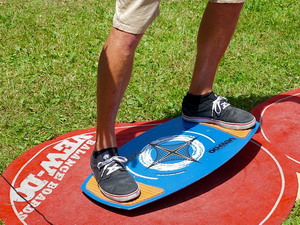 A third vital component for healthy pain-free joint movement is coordination and balance. This is about a really good nerve supply to and from the muscles. Without excellent muscular coordination, your joints don't track properly and stay in their designed groves. Consequently, tissues get pinched and inflamed.
This is where Yoga, Tai Chi, and balance exercises come into play. Slow repetitive movement and quiet balance build the neural pathways needed to coordinate the muscles. It only takes two weeks of laying in bed to lose half your muscle tone, and tone is the baseline indicator of good nerve connection. Use it or lose it applies to balance and coordination. A third vital component for healthy pain-free joint movement is coordination and balance. This is about a really good nerve supply to and from the muscles. Without excellent muscular coordination, your joints don't track properly and stay in their designed groves. Consequently, tissues get pinched and inflamed.
This is where Yoga, Tai Chi, and balance exercises come into play. Slow repetitive movement and quiet balance build the neural pathways needed to coordinate the muscles. It only takes two weeks of laying in bed to lose half your muscle tone, and tone is the baseline indicator of good nerve connection. Use it or lose it applies to balance and coordination.
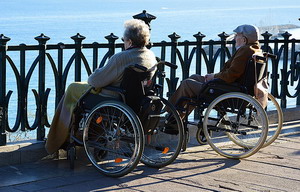 So can we rebuild the cartilage in our joints lost from age and injury? I would say probably yes, but it is not easy. Your current lifestyle is what created the loss, so rebuilding would require an entirely new lifestyle. The same can be said for all of the degenerative diseases. Is there a miracle supplement or
treatment that can rebuild your joints? Not at this time. Lots of folks are researching this, but so far they have not come up with a winning strategy. Since age and degeneration appear to be going hand in hand these days, I suspect that our American lifestyle is failing us. Most folks will not be interested in making significant changes to their current lifestyle, as to do so involves significant discomfort. But for those of you who are not willing to accept the inevitability of gradual
decrepitude, the challenge is there. Good journey! So can we rebuild the cartilage in our joints lost from age and injury? I would say probably yes, but it is not easy. Your current lifestyle is what created the loss, so rebuilding would require an entirely new lifestyle. The same can be said for all of the degenerative diseases. Is there a miracle supplement or
treatment that can rebuild your joints? Not at this time. Lots of folks are researching this, but so far they have not come up with a winning strategy. Since age and degeneration appear to be going hand in hand these days, I suspect that our American lifestyle is failing us. Most folks will not be interested in making significant changes to their current lifestyle, as to do so involves significant discomfort. But for those of you who are not willing to accept the inevitability of gradual
decrepitude, the challenge is there. Good journey!
Take care,
David
Ellen 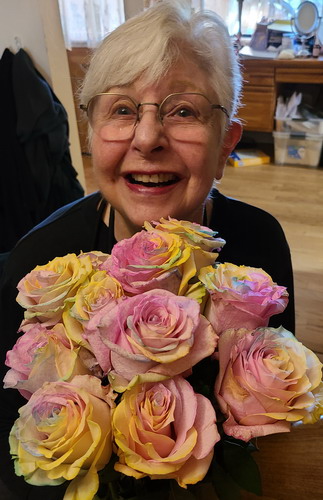
Amber came by after Easter and brought Ellen some amazing roses. I think she called them Rainbow Unicorn roses. They have a full rainbow of colors in each one. I have added color to daffodils by adding food color to the water I put them in, but never so many different colors. These were very lovely.
|
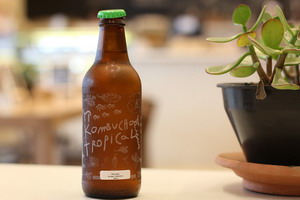 Kombucha probiotics may improve your fat metabolism
While the studies have only been done in worms so far, the results suggest that drinking kombucha may reduce fat accumulation, lower triglycerides, and produce a fasting like state even while sufficient calories are present. Kombucha probiotics may improve your fat metabolism
While the studies have only been done in worms so far, the results suggest that drinking kombucha may reduce fat accumulation, lower triglycerides, and produce a fasting like state even while sufficient calories are present.
More
_____________________________________________
"Since love grows within you, so beauty grows. For love is the beauty of the soul."
~ Saint Augustine
__________________________________
 Ketogenic diet improves severe mental illness
Stanford has been researching the impact of a ketogenic diet on schizophrenia and bipolar disease. The trial participants showed and average 31% improvement in their illness as well as loosing weight and improving their metabolism. Ketogenic diet improves severe mental illness
Stanford has been researching the impact of a ketogenic diet on schizophrenia and bipolar disease. The trial participants showed and average 31% improvement in their illness as well as loosing weight and improving their metabolism.
More
________________________
"Pray as though everything depended on God. Work as though everything depended on you. "
~ Saint Augustine
_________________________________________________
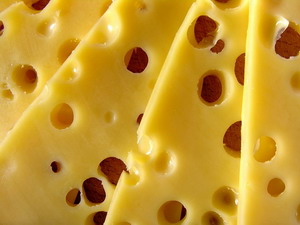 Cheese does not promote heart disease Cheese does not promote heart disease
A meta analysis of 29 studies over the last 35 years and involving almost a million people has shown that there is no increase in heart disease or any other cause of death. Nice to have some good news for once.
More
_________________________________________
"Resentment is like drinking poison and waiting for the other person to die."
~ Saint Augustine
_____________________________
Our address is 9725 Fair Oaks Blvd. suite A
Our hours are M, Tu, Th, F 10 to 3:30
Finding our location is very easy. Coming from highway 50 up Sunrise Blvd, you turn left and go up a block. We are on the right hand side - the building just past the Subway Sandwich shop. If you are coming down Sunrise from the Mall area then just turn right on Fair Oaks Blvd and up a block on the right.
If you are coming from the Roseville area you could come down Sunrise Blvd, but that is a long trek. It is probably shorter time wise to come down Auburn Blvd - San Juan Ave like you have been for the Sunset office, but instead of turning left at Sunset, keep going straight 3 more lights to Fair Oaks Blvd and turn left. Go down 2 lights to New York Ave, go through the intersection, and immediately turn into the turn lane once the center
divider ends. We are on the left.
You are free to reprint this article in your newsletter as long as you include the following statement in the same size type and color:
"This article appears courtesy of Fair Oaks Health News, offering natural and healthy solutions for body, mind and soul. For a complimentary subscription,
visit http://www.fairoakshealth.com"
Referral doctor for when we are out of town: Jennifer Webb DC
Jennifer Webb DC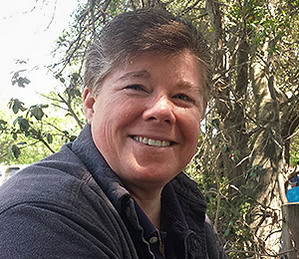
6216 Main St. suite C1
Orangevale
988-3441
|
| |
|
|
|
_______________
to check on old newsletters
_______________
About Dr. DeLapp
|
Dr. DeLapp has been a philosopher, non-force Chiropractor, medical intuitive, and health innovator for over 41 years. He began experimenting with medical intuition in 1972 while studying physics at UC Davis. In addition to physics he designed and completed an individual major in the philosophy and psychology of education. Shortly after he choose to pursue a career in the only
truly health oriented profession available at that time, Chiropractic. He graduated with honors in 1981 with his doctorate and opened a private practice.
Since that time he has continued his research into the effects of consciousness and learning on health.
He developed the Biomagnetic Retraining system for correcting movement abnormalities.
Since 1991 he has focused on developing a powerful system for uncovering and assisting the mind-body connection in health and personal growth. The in-depth coaching, guided by the subconscious direction from the body, is called Heartflow. It is available at Fair Oaks Health.
Fair Oaks Healing
& Arts Center
Staff
 Dr David DeLapp DC
Dr David DeLapp DC
Chiropractor
Ellen Flowers FGM
Spiritual Life CoachEnergetic Nutritionist
Health Care Coordinator
Susan Richardson
Office Manager
Front Desk
Sherry Herrera
Front Desk Person
Susan McDonald
|
|
